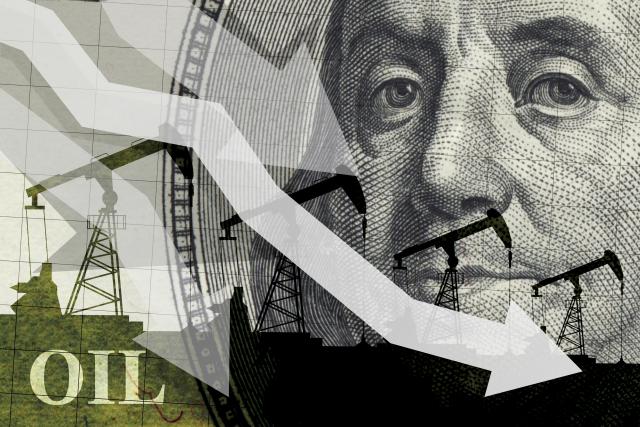
Global crude could soar to $70/bbl this year in reaction to severe inventory shortages and a pending demand surge, Raymond James data shows.
“The inventory builds that everyone thought were going to happen in the first half of 2020 just didn’t materialize,” said Marshall Adkins, director of energy investment banking at Raymond James. “They were about half as big as the IEA (International Energy Agency) had projected and important because we have to work off those inventories to get back to a balanced market.”
Several factors could push oil prices above $70/bbl but, at the core, it will be critically low global inventories that trigger an increase, argued Adkins at the recent Supply and Demand Spring Conference 2021 hosted by the Independent Petroleum Association of America (IPAA) and Texas Alliance of Energy Producers.
A widening gap created by a supply shortfall and stronger demand growth has led to an imbalanced and undersupplied oil market, he said. Adkins forecasts global inventories will continue to tighten over the next six months, which means OPEC+ will need to max out excess capacity by mid-2022.
“My math shows us going way below normal inventories starting the fourth quarter of this year, but really peaking in the third quarter of 2022,” he said. “This will only continue to tighten, putting oil well above $70 by the end of this year.”
“If it doesn't,” he added, “the supply and demand just simply won’t balance, and it’ll make it much tighter, which will force that oil price to go even higher.”
According to Raymond James estimates, global oil inventories have dropped 75% since April 2020. The data shows the global supply of crude oil is down 2 MMbbl/d and the U.S. supply is about half of the decline, with the Bakken and Midcontinent regions at the thick of the plunge.
Global oil inventories have already neared “normal” levels—7.6 billion barrels—and will drop well below that from January 2022 to October 2023, according to the firm’s research. Even if OPEC+ output recovers to pre-COVID levels by 2021, inventories will still fall roughly 2 MMbbl/d, Adkins noted.
On the other side of the equation, the consensus among analysts is that demand will surge 5.5 MMbbl/d in the next six months. If this comes to fruition, Adkins said OPEC will have to back off all cuts and increase by an additional 2 MMbbl/d to balance the market by year-end 2021.
“To get to a balanced market, OPEC+ has to get back to where they were pre-COVID by the fourth quarter and go well above that by early 2022,” he said.
Once demand gains this momentum, the resulting supply crunch will cause prices to jump north of $70/bbl by the end of 2021, he noted.
If oil does reach above $70/bbl, U.S. rig count activity could also start to move upward from 470 rigs in 2021 before hitting 700 by 2022.
“Over time, companies will see cash flow and produce more returns to investors, so there’ll be plenty of excess cash to increase activity specifically in the U.S.,” Adkins said. “I think we will exit this year closer to 550 rigs, and average 700 rigs in 2022, which implies an exit closer to 800 rigs.”
However, the IEA’s recent outlook counters the bullish sentiment with a lowered forecast for global oil demand in 2021 because of the COVID-19 pandemic.
“The staggering inventory surplus that built up last year is being worked off and global oil stocks, excluding strategic reserves, will return to pre-pandemic levels in 2021,” the IEA said in the report.
Additionally, the IEA anticipates that the global oil market will be adequately supplied through the medium term.
“The historic collapse in demand in 2020 resulted in a record 9 MMbbl/d spare production capacity cushion that would be enough to keep global markets comfortable at least for the next several years,” the IEA said.
But if fresh upstream investments disappear because of the shift to clean energy, the IEA predicts spare capacity cushion will slowly erode to 2.4 MMbbl/d by 2026. It would be the lowest level since 2016.
Adkins maintains that oil inventories will continue to see more ebbs and flows as more tankers are disgorged. Other fundamentals he noted to watch for include E&P companies’ continued focus on investor returns, what price Saudi Arabia increases supply, how soon Iran ramps up production, the uptick of air travel, and the distribution of COVID-19 vaccines.
“The combination of this overwhelming negative sentiment from investors and push to remove funding to energy, combined with a massive underperformance in the industry and the bullish oil fundamentals, sets up oil prices to run higher on a multiyear deal,” he said.
Recommended Reading
E&P Highlights: Aug. 26, 2024
2024-08-26 - Here’s a roundup of the latest E&P headlines, with Ovintiv considering selling its Uinta assets and drilling operations beginning at the Anchois project offshore Morocco.
OMV Makes Gas Discovery in Norwegian Sea
2024-08-26 - OMV and partners Vår Energi and INPEX Idemitsu discovered gas located around 65 km southwest of the Aasta Hansteen field and 310 km off the Norwegian coast.
E&P Highlights: Sep. 2, 2024
2024-09-03 - Here's a roundup of the latest E&P headlines, with Valeura increasing production at their Nong Yao C development and Oceaneering securing several contracts in the U.K. North Sea.
Breakthroughs in the Energy Industry’s Contact Sport, Geophysics
2024-09-05 - At the 2024 IMAGE Conference, Shell’s Bill Langin showcased how industry advances in seismic technology has unlocked key areas in the Gulf of Mexico.
Devon Energy Expands Williston Footprint With $5B Grayson Mill Deal
2024-07-08 - Oklahoma City-based Devon Energy is growing its Williston Basin footprint with a $5 billion cash-and-stock acquisition from Grayson Mill Energy, an EnCap portfolio company.
Comments
Add new comment
This conversation is moderated according to Hart Energy community rules. Please read the rules before joining the discussion. If you’re experiencing any technical problems, please contact our customer care team.





